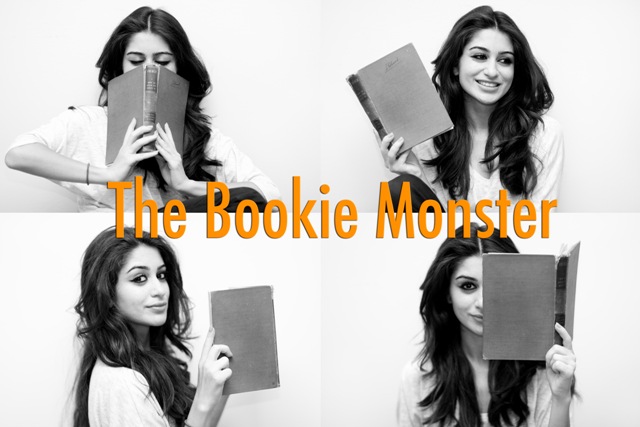Cutting For Stone: Who Are You?
Identity and it's ever-changing nature takes centre stage in Ethiopian writer Abraham Verghese's literary debut - in a story so moving, it serves to remind our own budding novelist, Anam Sufi, why writing is worth it.

There’s something peculiar about identity. Something raw, detached, ever present, yet constantly dynamic. What it was before is no longer now, and what it is now won’t be in the future. Perhaps that’s why the question has offered literature an endless supply of subject matter since time immemorial. In the quest to find ourselves, what is it that we look to for answers? Is it race? Nationality? Culture? Blood and bones? Accomplishments? Aspirations? The list is ever growing, yet ironically ever-constricting. For what does it truly mean to be Egyptian? To be a man? To be a woman? To be rich or poor? Are these considerations adequate instruments by which to construct a mapping of who we are?
Such are the questions, applicable to all who have ever found themselves caught in an existential crises, that Abraham Verghese addresses in his beautiful novel, Cutting for Stone. An Ethiopian doctor, Verghese has managed to create a genre of its own, one that stands out in its ability to fuse science with fiction in a manner that allows the reader to forget the widely accepted belief that medicine, especially surgery, demands the need to stymie emotion.
The narrator of the story is Marion Stone, one of two twins that are born of an Indian nun who dies at childbirth, and an English surgeon who forsakes his children and abandons them to the care of two Indian surgeons living in Ethiopia. Conjoined at the head at birth, Marion and Shiva (the other twin), function as two characters that are at times viewed as separate individuals but, at others, as the same person. What emerges from the cocktail of nationalities, religion, skin tones, and biological time capsules, is a commentary on the nature of human relationships. Verghese uses medical diction to edify what it means to feel pain, internal and external. His circumscribed tale of an amalgamated family functions to relate the story of colonialist history, the internal politics of a fractured Ethiopian society, as well as the roaring struggle to find peace and acceptance with one’s own past. These themes are elucidated in the characters’ separate and respective experiences of fear, nostalgia, internal voids, and forbidden romances.
A few weeks ago, the team at CairoScene brought up a slight issue in my column, The Bookie Monster. It appeared to be getting too many hits, and therefore the system kept crashing. Haha, only kidding… a girl can dream. But seriously, the issue raised was whether or not it would be more appropriate to consider the variable of relevancy in relation to what books I review. Initially, I agreed that perhaps texts that show cultural or geographic relevancy in one way or another was a smart way to go, and/or reading and critiquing recent releases was the way to keep my column “up to scratch”, as they say. But after reading Cutting For Stone, I can’t help but mentally condemn myself for such blasphemy.

The thing is, Cutting for Stone was such a striking story, one that literally moved me to tears, that it made me recall the true essence of literature. What enables writers to transcend the boundaries of mortality through the written word, is the ability of literature, and all forms of art even, to operate as an experience to be had, as opposed to a static expression of the orchestrator. It is the variables of universality, of timelessness, and of interpretation that allows literature to endure, and these characteristics are what separate a good read from an assembly of pages that were more useful as trees. Accordingly, to demand focus on recent books that are more “relevant,” is like removing the skeleton of literature and asking the skin to stand on its own. It might appear I am rambling at the moment, but if you’re still reading… you’re clearly still interested, so no need to vindicate myself.
Anyway, while reading Cutting for Stone, I was fascinated by the way a story of two half-English, half-Indian twins born and bred in Ethiopia could move a Pakistani living in Egypt (me) so deeply and speak in terms that seemed as though they were directed at me specifically. Think about the phenomena for a moment; it’s not every literary work that has the ability to forge such an unexpected bond between the inanimate and the living, especially when separated by constrictions of geography, culture, race, religion, and all of the other infinite attempts at categorisation that man has constructed. Verghese, in his first novel, has shown to be a master in the art of universality.
There is medical terminology that, if you’re anything like me, will go right over your head, but you needn’t worry. Verghese’s writing style is such that he takes his reader into consideration, and offers the protracted readership just enough to take all the book has to offer with them. The beauty of Cutting for Stone is not only its subject matter, but also the simplicity offered the narrator’s voice. We are provided the matter-of-fact as well as the sympathetic, creating a multi-dimensional perspective of all events that unfold in the text.
If you haven’t clocked on by now, the point I am getting at is that Cutting for Stone was a fantastic read; a reminder to why I aspire to be a writer.
- Previous Article I Got Banged!
- Next Article Money for Mohammeds
























